For a small trip one of Ankers's many small battery backups will be more than enough to keep your devices charged. But what if you are looking to power other devices beyond USB-powered devices or what if you need more capacity? The same goes for a power outage at your house as well, if you want to keep your internet up, power your laptop, or a medical device like a CPAP you might want a larger battery backup without going completely in on a gas-powered generator. Anker with their SOLIX line has been in the power station market for a while now. But bridging the gap between a small pocketable battery backup and the larger whole-house solutions they have introduced the SOLIX C300 as well as the similar C300 DC which doesn’t have the built-in AC outlets. They don’t advertise it as a UPS, but it has UPS capabilities, so I’m curious to see how it can handle that. Having a buffer keeping the modem and router up for short power outages would be helpful so let’s see what the Anker SOLIX C300 is all about.
Product Name: Anker SOLIX C300 Portable Power Station
Review Sample Provided by: Anker
Written by: Wes Compton
Amazon Affiliate Link: HERE
|
Specifications |
|
|
Lighting |
Built-In Light Bar |
|
Dimensions |
6.5 × 6.3 × 9.5in |
|
Net Weight |
9.1lb |
|
Capacity / Output |
288Wh | 300W (SurgePad 600W) |
|
Number of Ports |
8 |
|
Solar Input |
XT60 - 100W |
|
Car Outlet |
120W |
|
UPS |
<10ms |
|
Battery Type |
LifePO4 |
|
Recharge Time |
AC Outlet - 50 Minutes |
|
App Connection |
Yes |
|
What's in the Box |
Anker SOLIX C300 Anker SOLIX AC Charging Cable Safety Instructions Warranty Card User Manual |
|
Warranty |
5-Years |
Photos and Features
The packaging for the C300 has a white background and the front of the box has a large picture of the Portable Power Station showing off its built-in light and the status display. Up top it has the Anker Solix branding and down below the picture the model name is in a smaller font. There are icons highlighting a few of its features then down at the bottom it shows the battery capacity of 288Wh and the output wattage of 300 watts. One side has a picture of the C300 but lets you peek inside and see the batteries, that picture has lines showing off a few features. The other side shows someone bringing the C300 hiking and has a few examples of devices you can power using it. Then on the back, there is a third picture of the C300, this time showing all of the power outputs on one side and on the other side showing off the four different ways you can charge it.
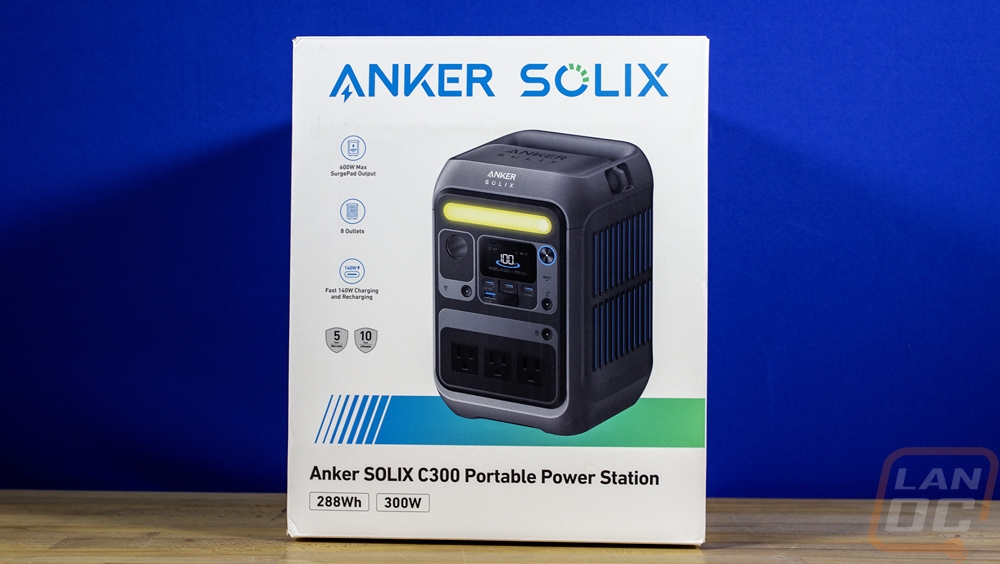
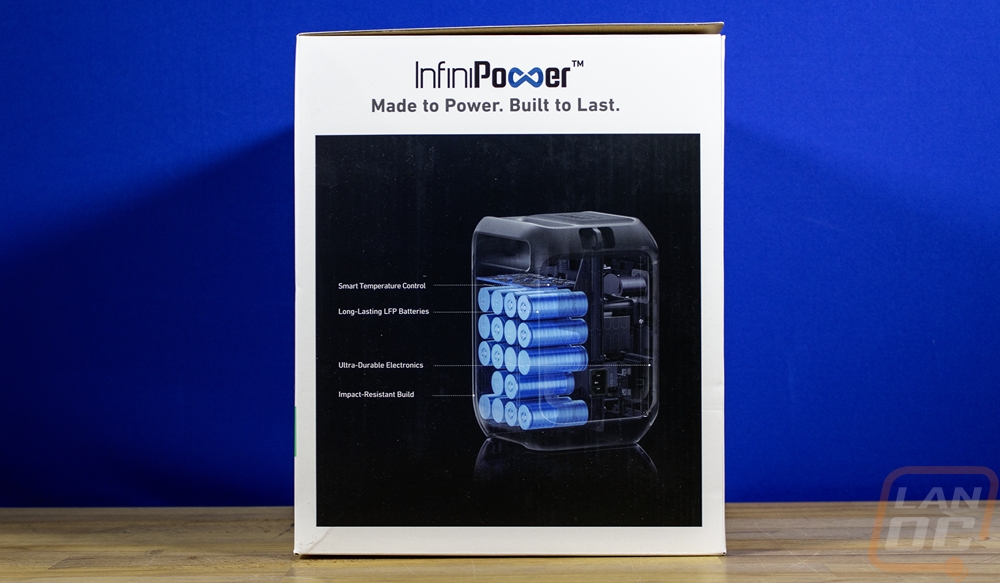
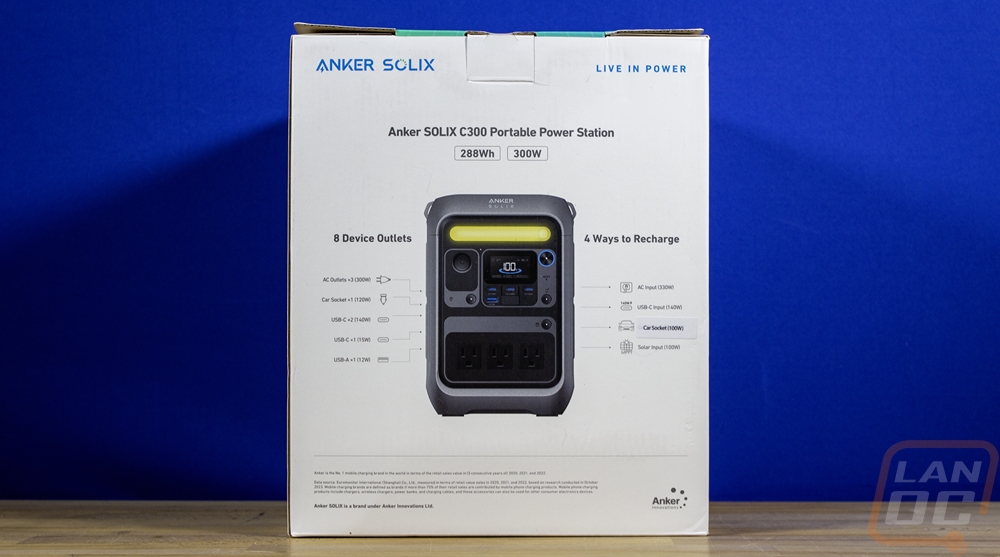
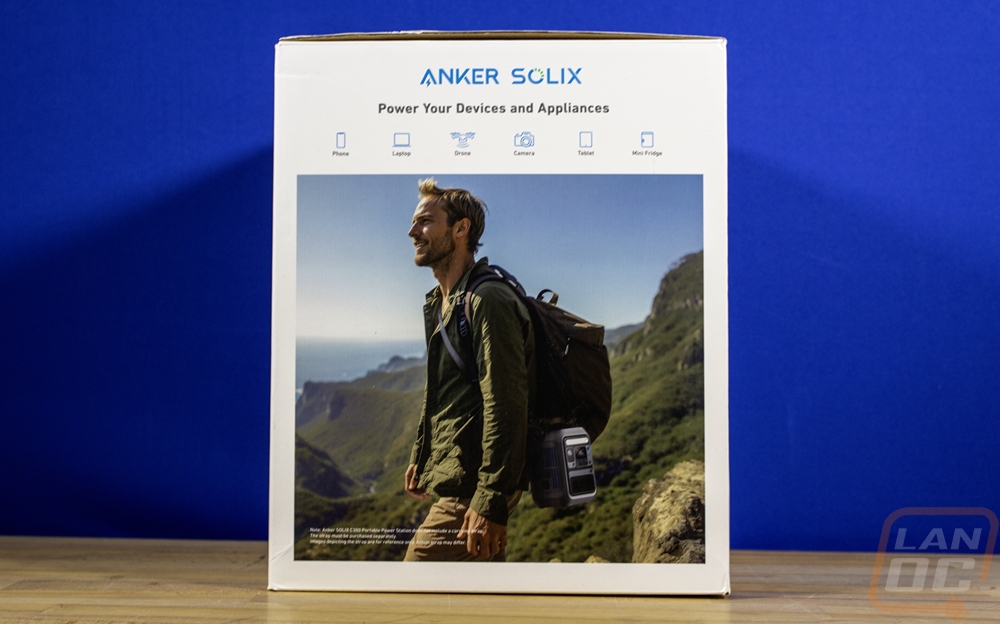
When you open up the box, they have the Anker Solix branding again along with a thank you printed on the inner lid. Then inside the C300 comes wrapped in plastic and has cardboard at the top and bottom that keep it centered in the box and protected. There is also a small accessory box as well.

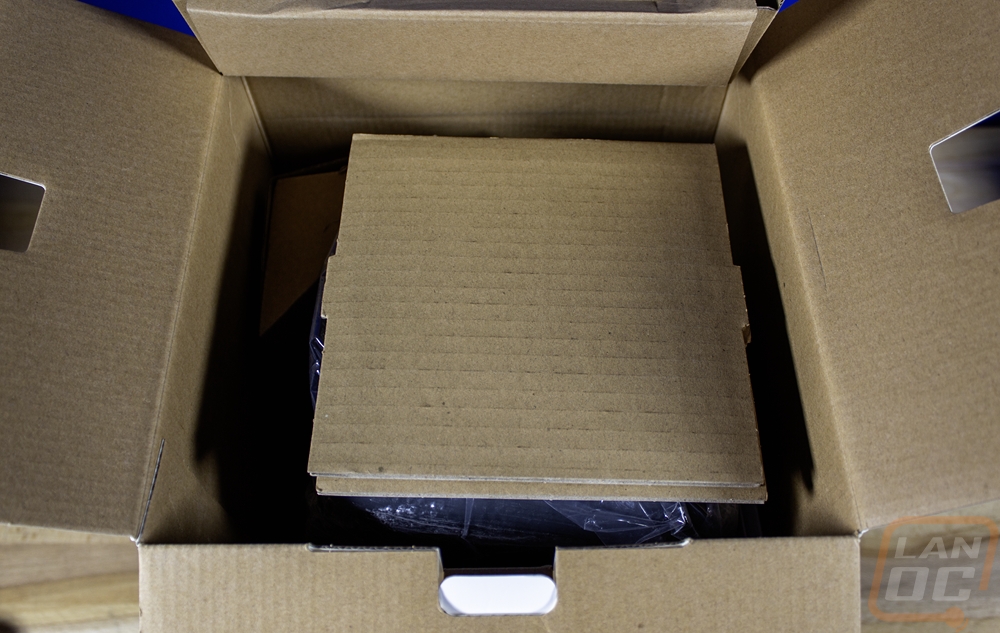
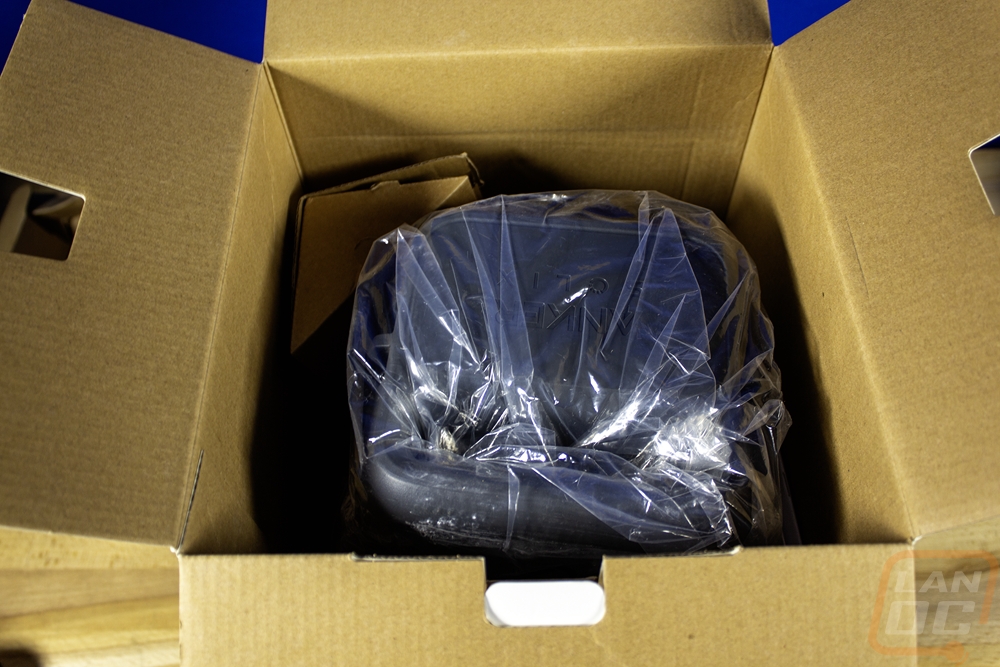
The C300 doesn’t come with too many accessories. You get a C13 power cord, aka a standard PC power cord for charging the C300 with AC power. Then for documentation, you get two things. You get a user guide which also has a QR code on the front which links to an online user guide. You also get a warranty card which has information on the warranty and how to register the C300. Anker has the 5-year warranty featured here right on the front of course.
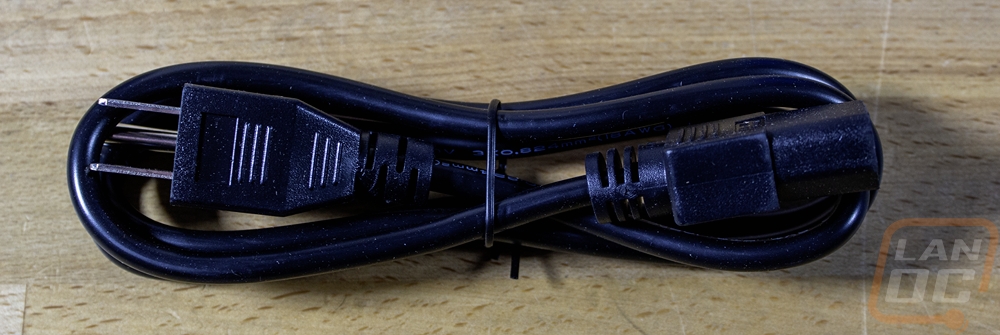
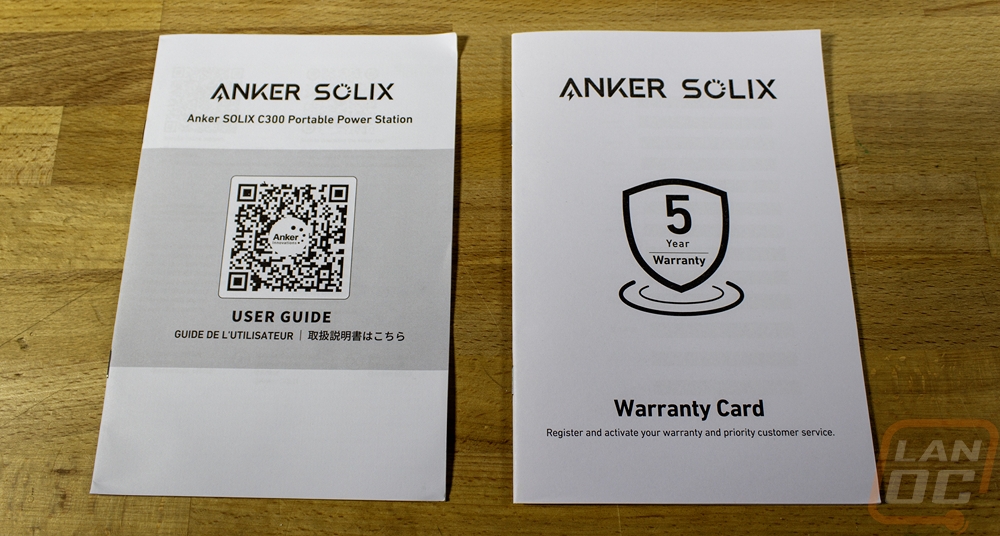
So the Anker Solix C300 Portable Power Station is one of two different products from the Solix line that both have the C300 name. The other is the C300 DC which comes in a little smaller and drops the AC power outlets as well as having a different design overall. While Anker has a large lineup of different battery backups, the Solix line is where they focus on larger battery backup solutions including whole house battery backups and what they call Solar Generators which combine a large battery backup with solar panels as a replacement for a gas-powered generator. The C300 though is from their camping series and it is one of their smallest option in that series with just the C300 DC being physically smaller and the C200 as well. Even still it comes in at 9.5 inches tall, 6.3 inches wide, and 6.5 inches deep. They use a combination of lighter and darker greys to give contrast around each of the sections on the front and the tall shape means a smaller footprint if you were using this inside of your tent for example.
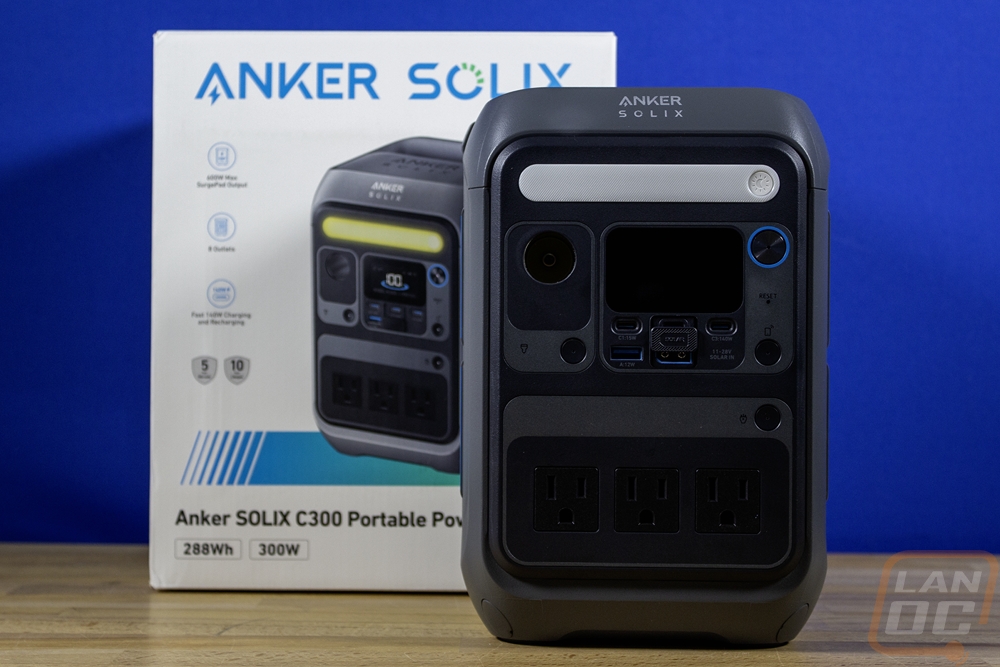
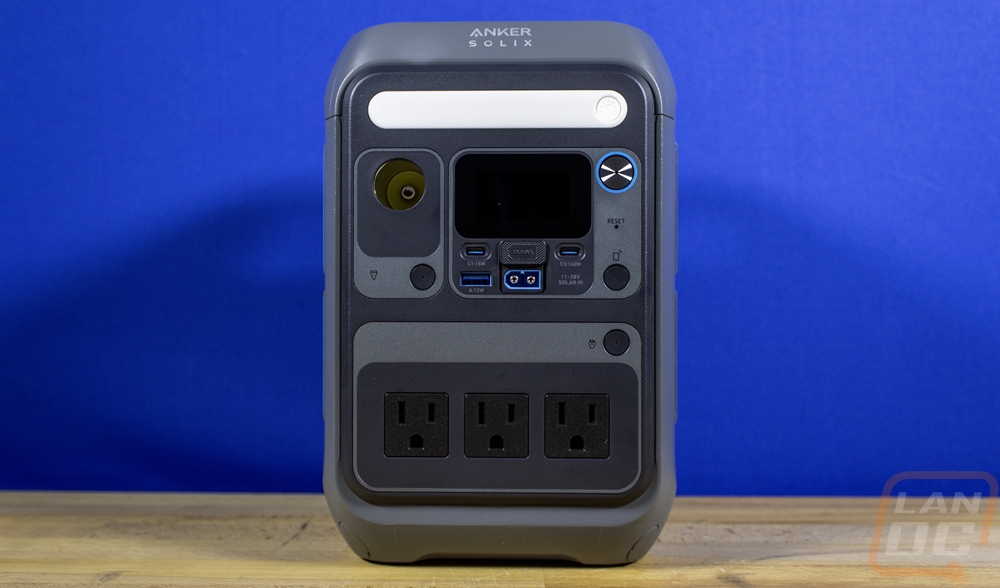
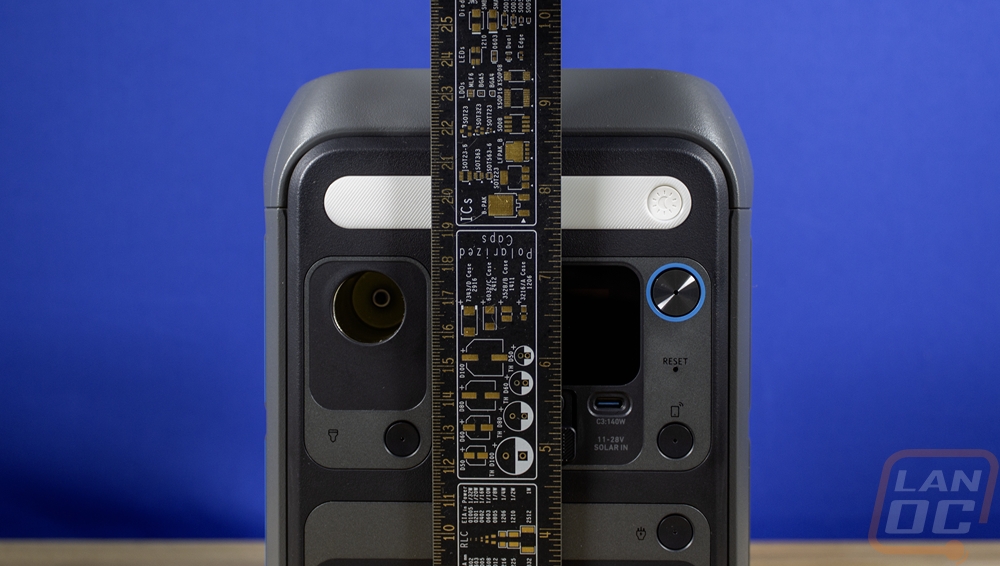
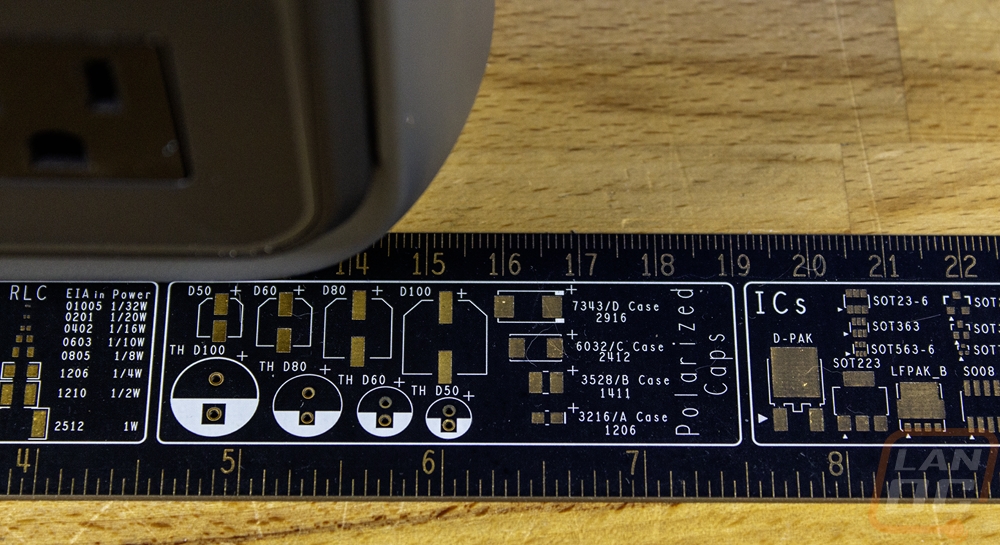
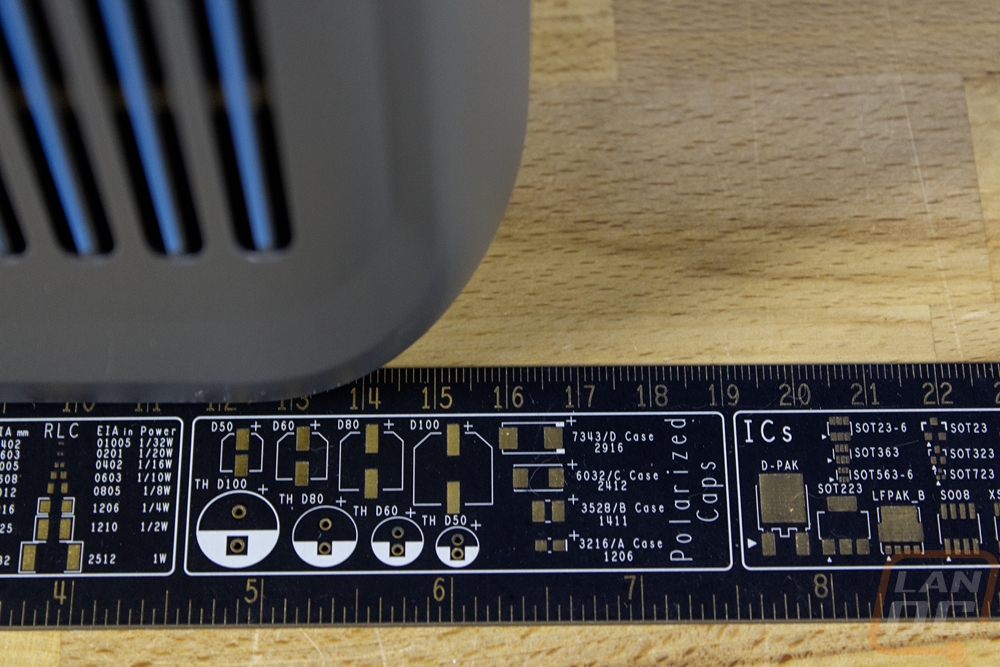
The front is where the action is here, almost everything you need to know about the C300 is on the front of the battery. Up top it has the Anker Solix branding and just below that the white strip is its built-in light bar. This light bar has three brightness settings and can also be set to flash SOS in Morse code. Below that you have a single c DC “car socket” or for those a little older a cigarette lighter plug. You can plug any device in that supports this or if you have a male-to-male cable you can use this connection to recharge the C300 as well. This connection is rated at 140 watts in total. They have a small button with the socket that turns this connection on and off and there is a small pinhole LED in the middle of the button that lets you know if it's on or not. Next to that is the display screen and all of the USB connections. The display is there so you can keep an eye on the battery level as well as the input and output of everything. The silver button with the blue ring around it is what you use to turn the display on or to put the C300 in pairing mode to set it up with the Anker app. There is also a pinhole reset button here as well. For USB connections you get three Type-C connections and one Type-A. They have kept things easy and each plug has its wattage rating right below it. The Type-A plug in the bottom left can output up to 12 watts and the Type-C above it does 15 watts. Then the two other plugs can both handle 140 watts each. The center Type-C plug is also the input if you are looking to charge the C300 with Type-C. That plug has a slide cover below it that slides up or down. When it is covering the Type-C connection you then have access to the two-pin XT60 solar panel connection. You can charge the C300 with solar panels that output 100 watts like the Solix PS100 panel or a 60-watt option that Anker pairs the C300 up with on their website. All of the USB connections have a power button as well in the bottom right corner to turn them off as well. Then in the bottom half of the C300, you have three AC power plugs, your standard household 3-prong connection with ground. There is a button to turn these on and off in the top right corner like with the other sections. These plugs don’t have a wattage rating labeled on them like the USB connections did but they fall under the total power output that the C300 is capable of which is up to 300 watts with a 600-watt surge to handle small spikes.
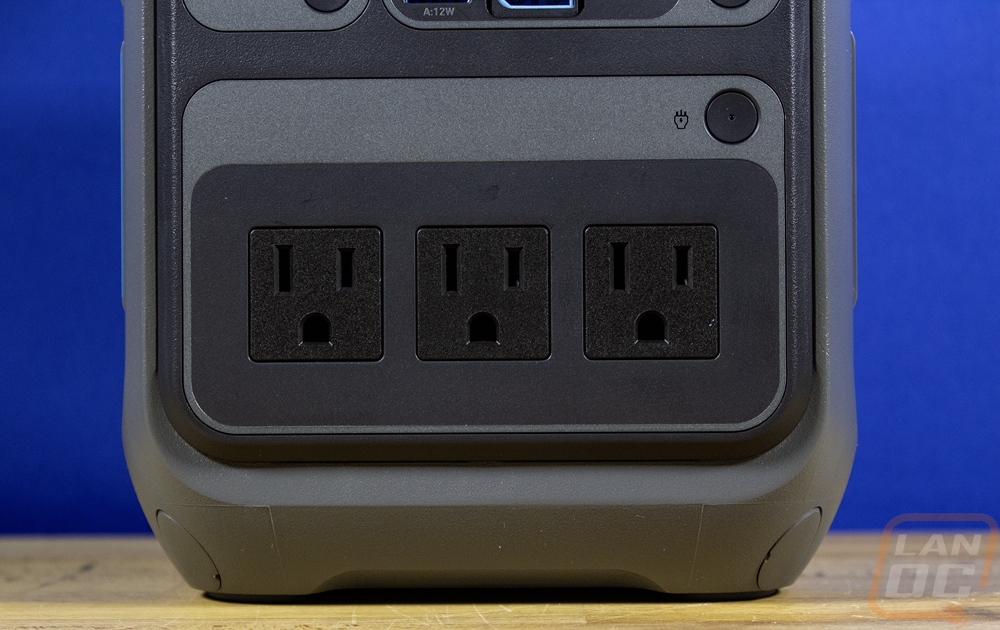
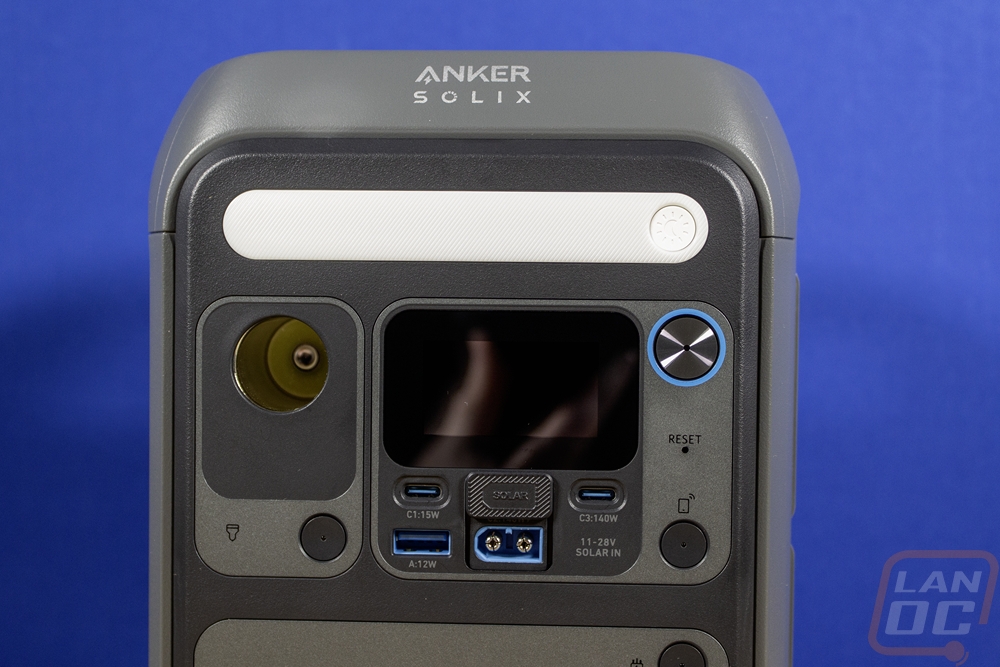
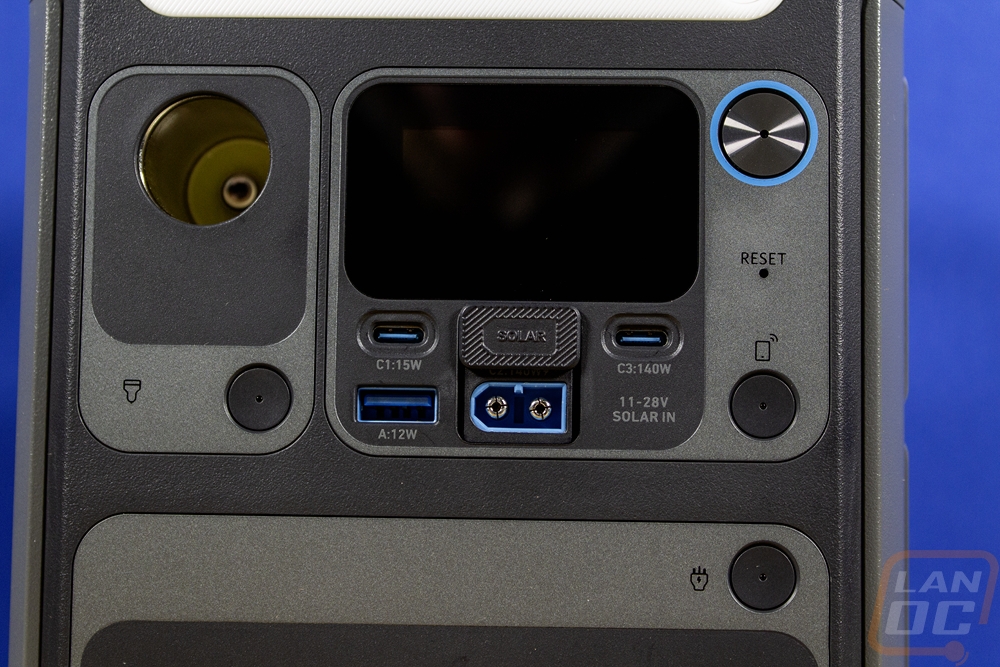
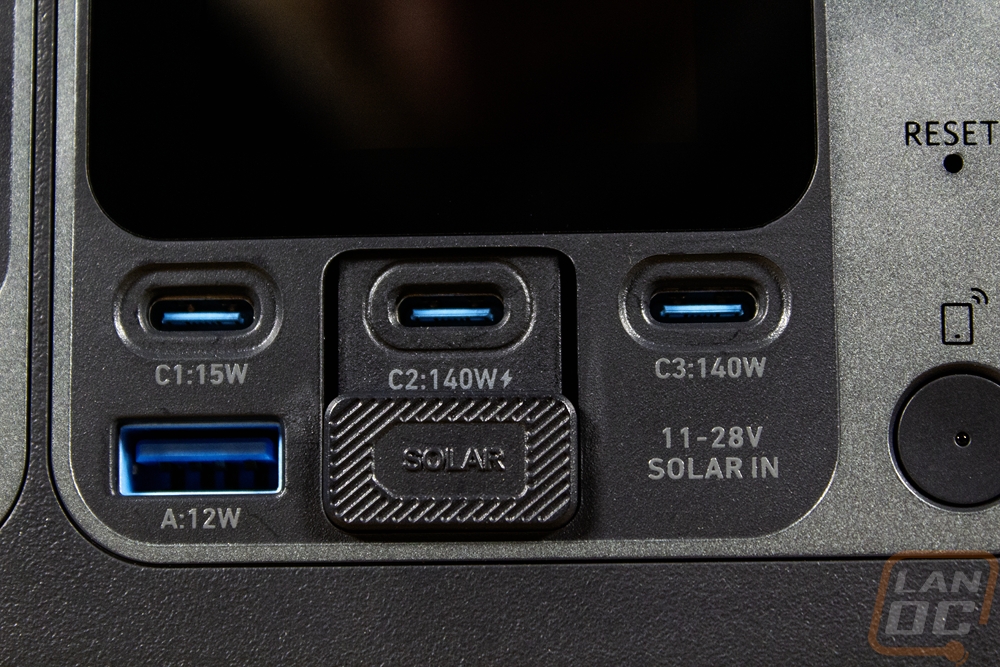
Both sides of the C300 have vents taking up most of the side panel and each of the vertical vents has a small blue strip in them as well. Both sides have a hook at the top which you can use with an adjustable carrying strap that Anker sells separately. That strap by the way is $29.99, which is crazy. I’m surprised that the carry strap doesn’t just come with the C300, but even without it the two hooks can be used with any strap that you have or you could use a carabiner and clip it right to your backpack like the packaging for the C300 shows off. The left side panel does have one other thing going on beyond the vents. They have an AC input plug here with a C14 connection, the female plug to a standard PC power cable like the one included with the C300. This is the fastest charging option for the C300.


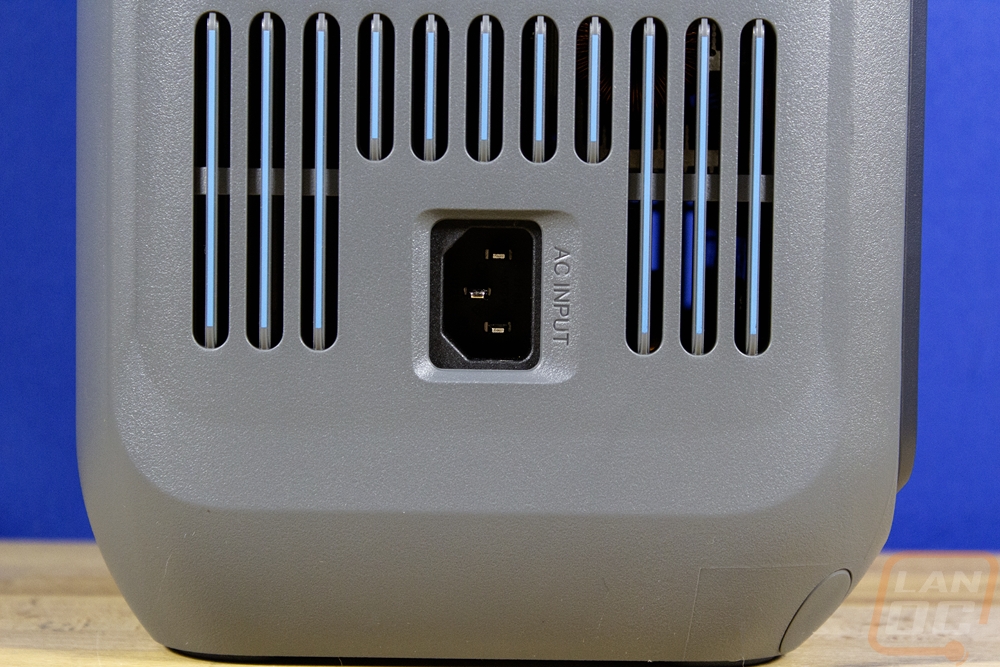
The back is all grey plastic like the rest of the housing but there aren’t any vents back here. There is a sticker here suggesting to charge the C300 up to 100% before storing and to recharge every 3 months when stored to keep the battery in good shape. Up top the back has a large handle molded into it. The top has the Anker Solix logo embossed into the top along with a fake carbon fiber weave as well.
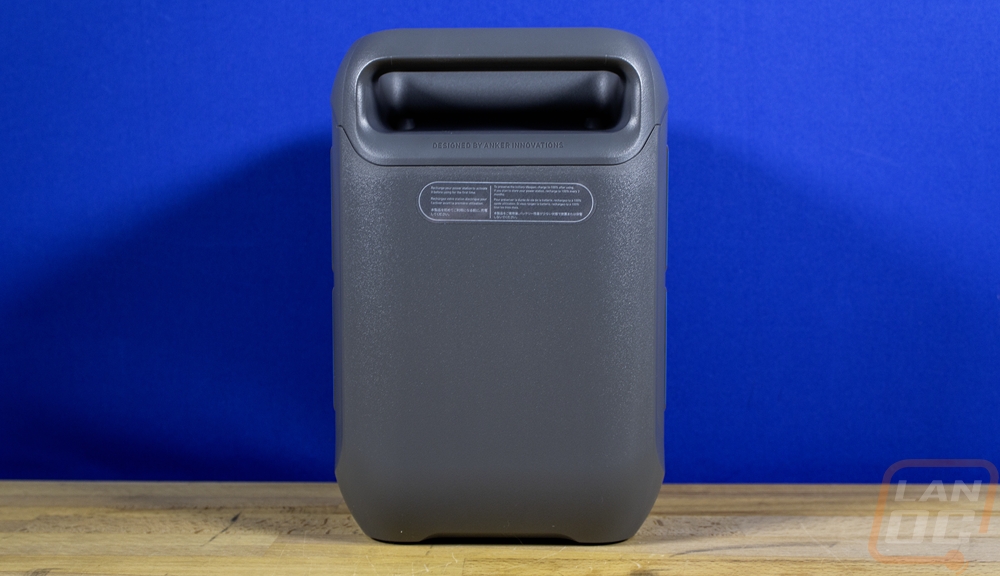
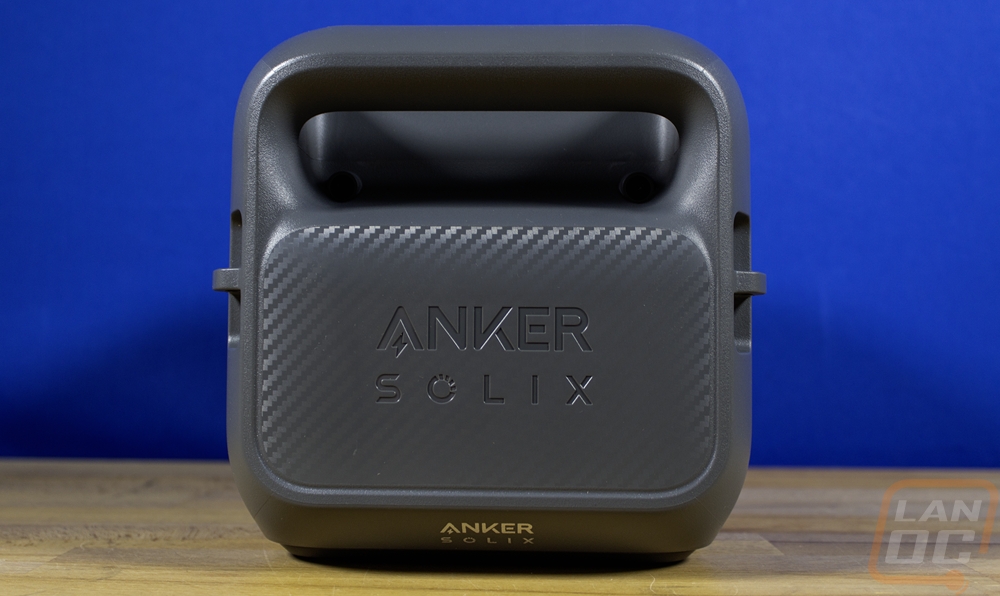
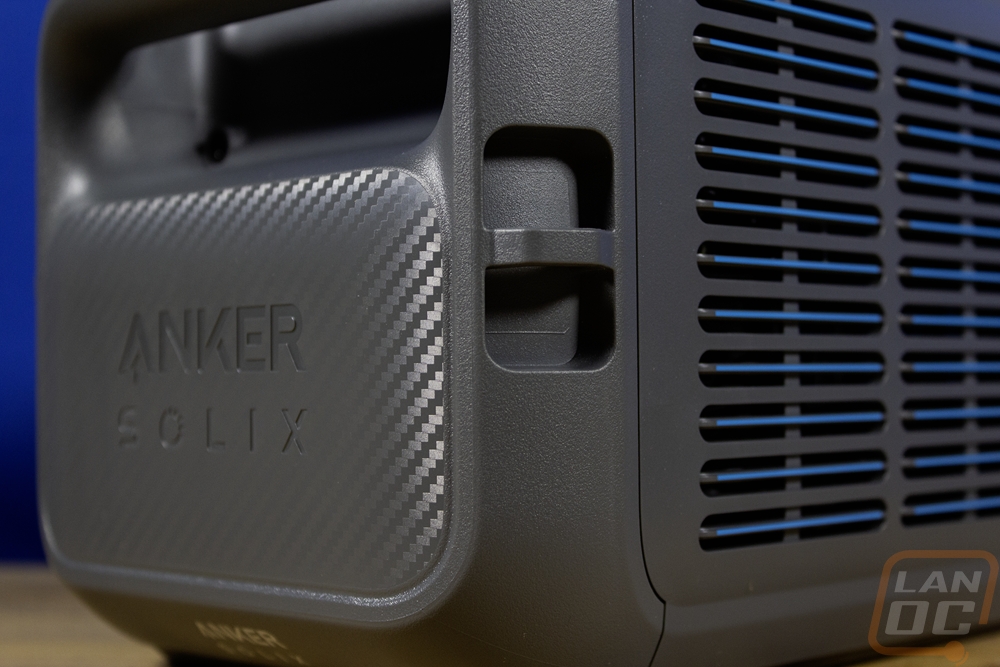
The bottom of the C300 is where you will find the information sticker hidden away. It has a QR code that the Anker app can use to connect to it, your serial number, and of course all of the warnings and certification logos that you would expect to see with a battery device that also has wifi and Bluetooth built into it. The base has four thick rubber feet in the corners to keep it from moving around as well.
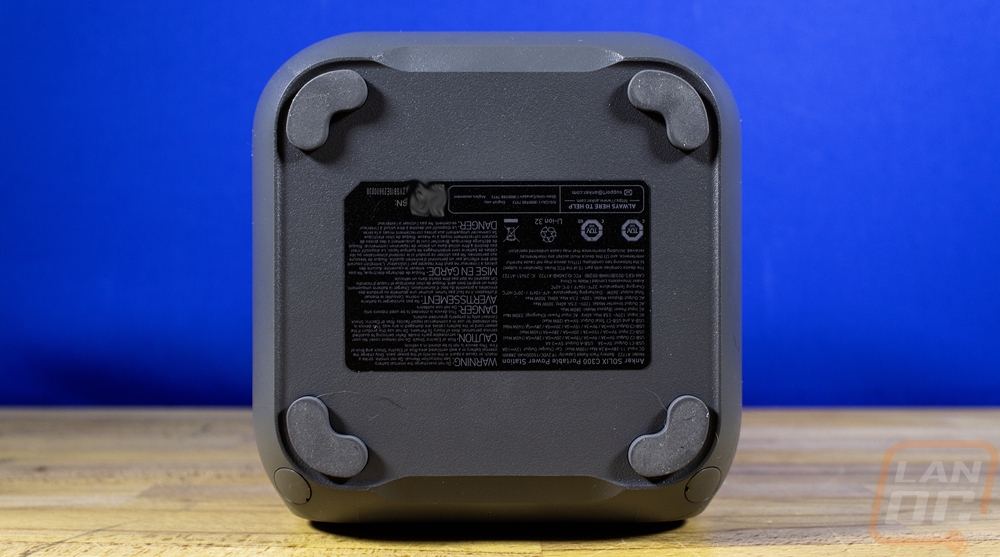
Anker has the C300 listed at 9.1 pounds and that is in line with the 9 pounds and 1.9 ounces that I measured. Batteries aren’t lightweight and packing 288Wh of battery capacity in it going to take a few batteries. They went with LifePO4 batteries aka Lithium Iron Phosphate batteries which don’t use any rare earth metals and are safer compared to a traditional lithium battery. But these do have a lower energy density compared to a lithium battery. I’ll take that extra safety every time though.
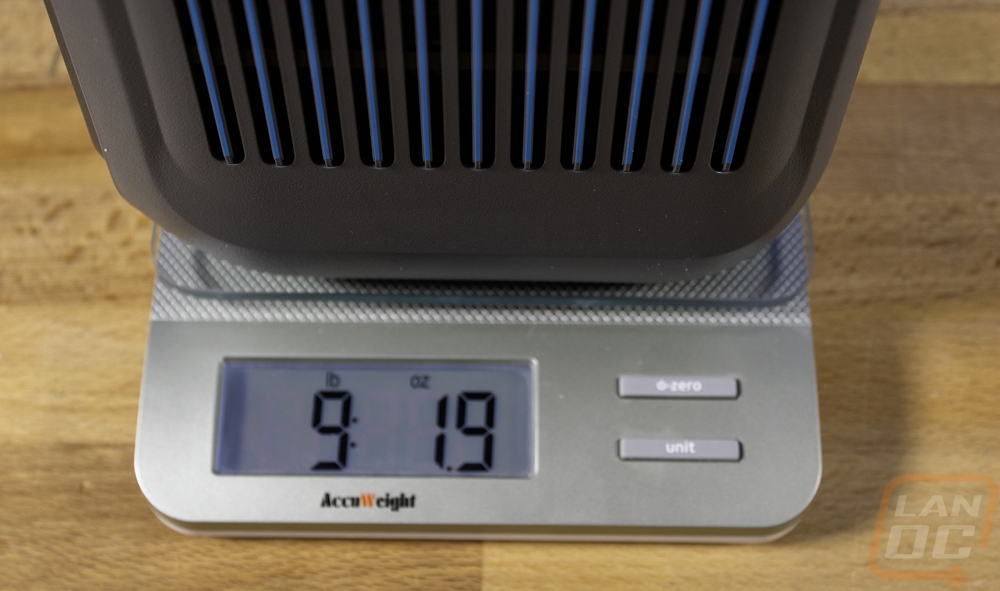
Now it’s interesting, I had a problem with our initial launch sample of the C300 and Anker sent over a replacement. I was surprised to find out that the two had different case colors. Both are grey but the replacement has a much darker grey finish than you saw in our initial pictures. I will talk about the issues I ran into in the performance section but I did want to include pictures of what I’m assuming is the off the shelf C300 compared to the launch C300.
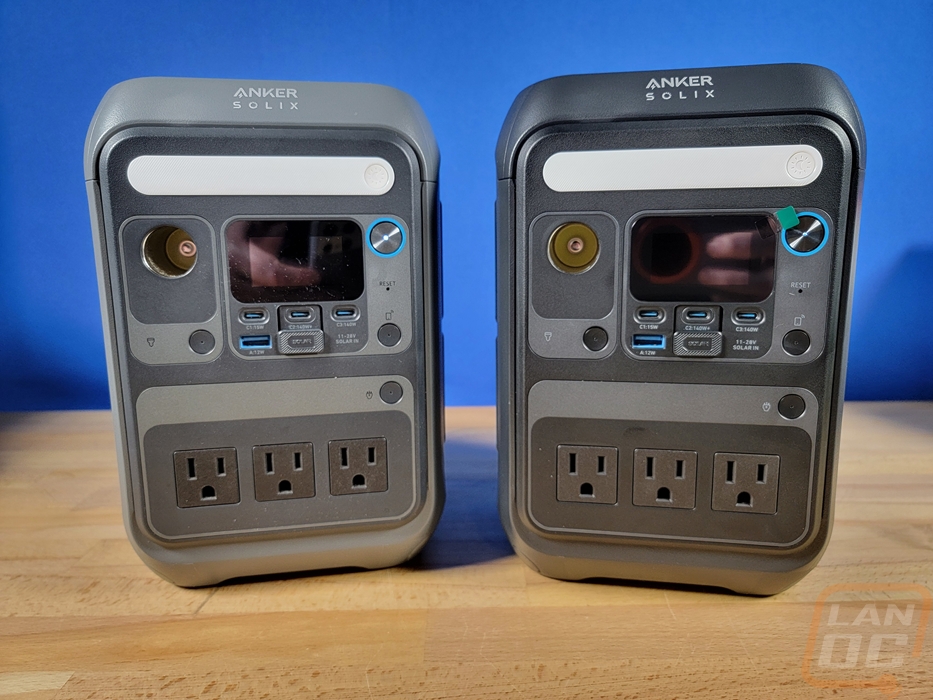
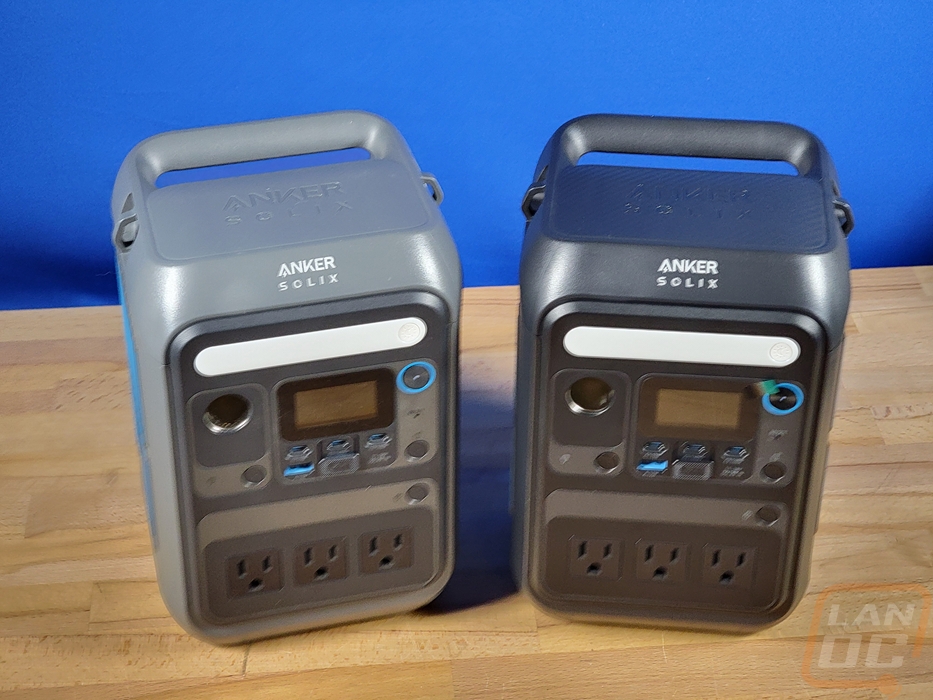
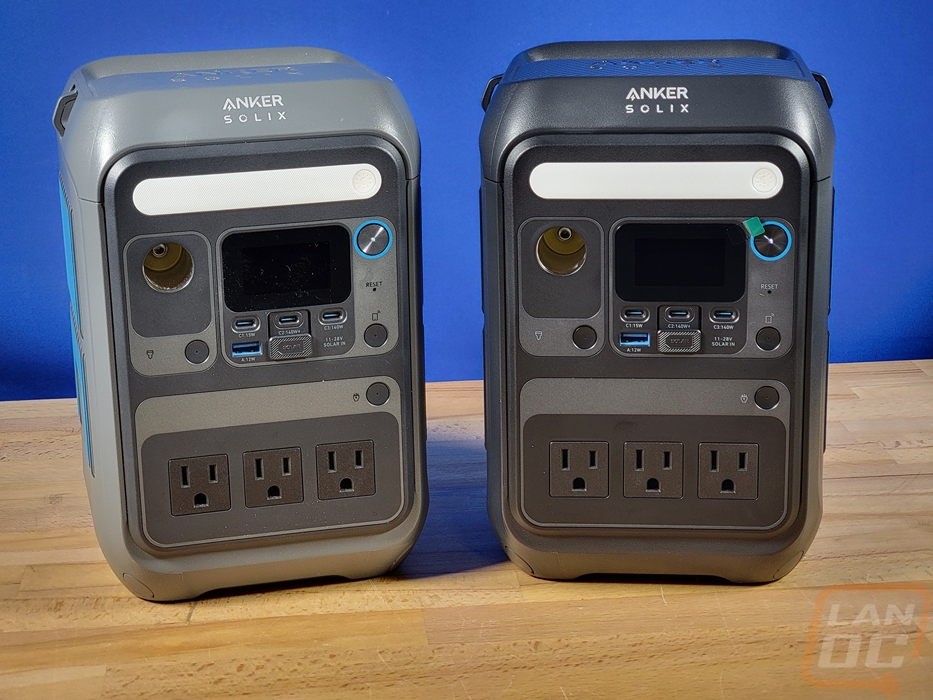
Performance
The Anker Solix C300 Portable Power Station is built to work with Anker’s app, similarly to the Anker Prime chargers that I took a look at a while back. So before getting into any other testing I wanted to touch on the app and what all you can do with it. Overall I prefer to not have to use apps when I can, but I did want to see what it was all about here and one thing I do like is if you have multiple Anker devices that have app support they are all tied in here. That doesn’t include Eufy security or the home apps for remote vacuums. That said once you click add device and press and hold the display button on the C300 the app picked it up right away and it was easy to get connected. You can name the device and pick if you prefer it to connect using Bluetooth or WiFi, if you use Wifi you will need to put in that information as well. Right away the app notified me of a firmware update and surprisingly it listed out what was changed. In the past a lot of the Anker firmware updates had general change notes like “quality of life improvements” which didn’t let you know at all what has changed.
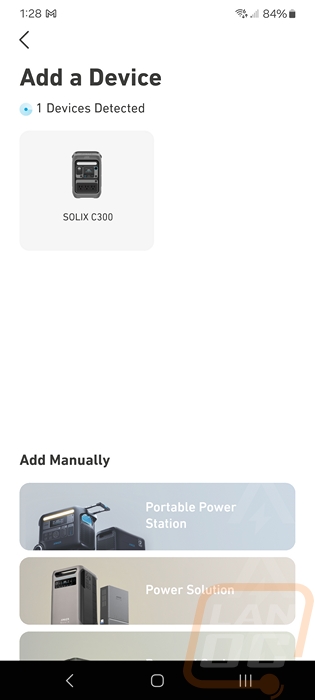
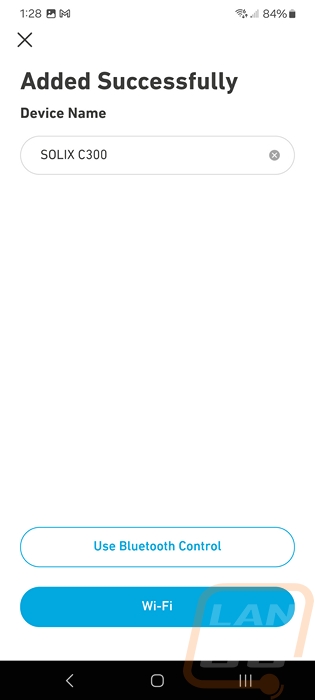
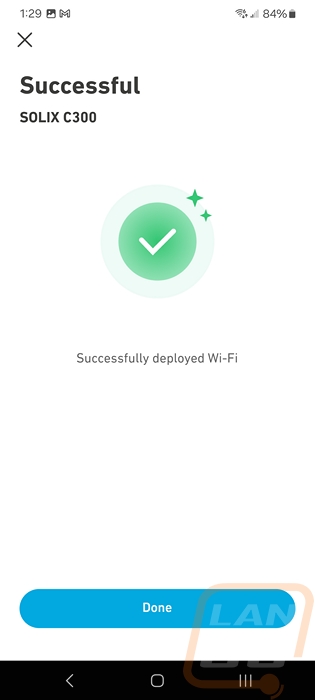
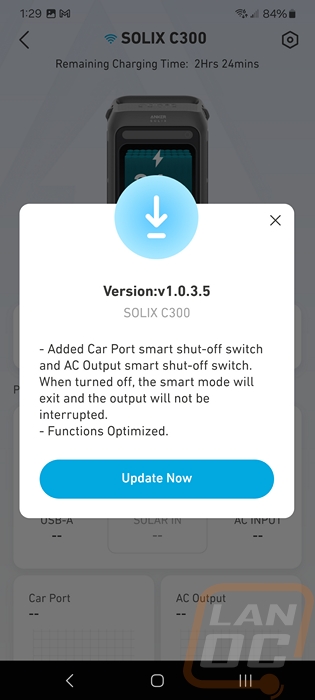
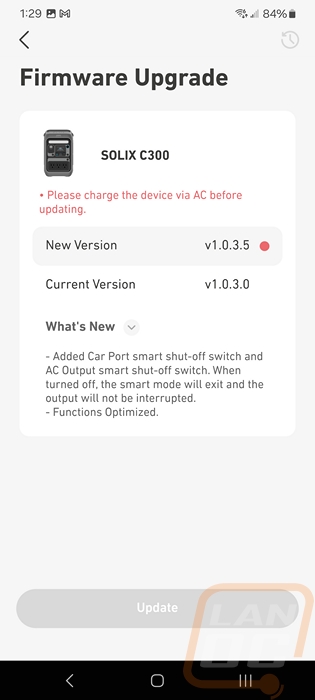
Once connected and updated the landing page looked a lot like what I saw with the Prime chargers. Up top is a picture of the C300 and inside it shows the current battery capacity status, that it is charging, and the battery temperatures. Above that, because it is charging we can also see how much longer it will take to get to full charge, when you aren’t charging this will show the remaining battery life at your current output rate. You can see in the pictures below a few screenshots of that charging process. I had it set to the fastest charging speed over AC which is the 325-watt input you see. The batteries eventually warmed up to 42c during the charge. The main page then has the port status of each of the ports. You can see when I had two things plugged into Type-C ports. One was pulling 2 watts and the other 1 watt with the total output up top. Down at the bottom, you have the car port and AC outlets and both of those have on and off buttons where you can turn them on and off remotely. Depending on how you use the C300, this is a nice smart outlet like function. You can also see the output graphed out as well. With the AC outlet, you can also schedule it to turn on and off a swell. Not pictured but down at the bottom you can also turn the light bar on and off and set its brightness as well and also turn the status screen on too, but that one seems pointless given that you are already looking at the app which has the same information and more.
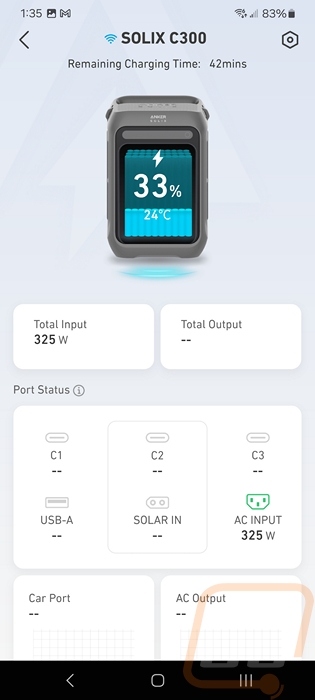
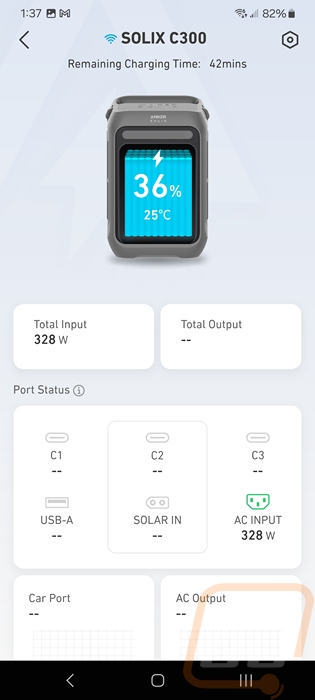
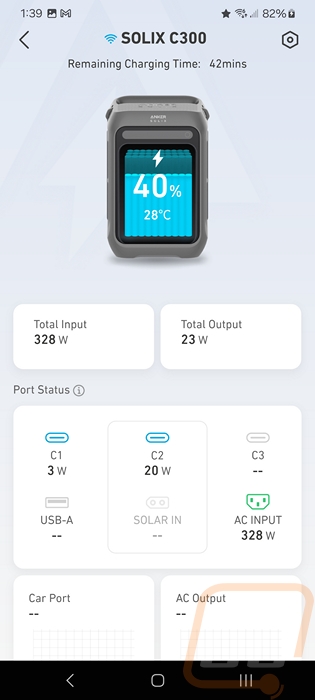
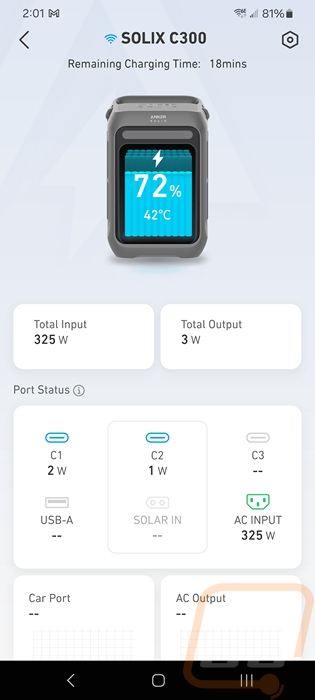
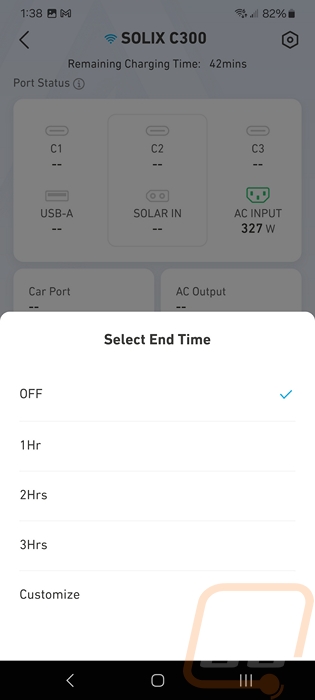
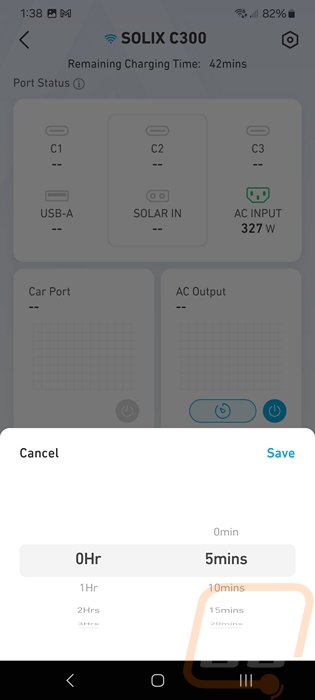
Up in the top right corner, you have a settings menu that you can open up. This is the main reason to use the Anker app as you don’t have control over any of this on the C300 itself. You can change the AC recharging power rate with 100-watt, 200-watt, and 330-watt options. This is cool if you aren’t in a rush and want to be gentler on the batteries or if you have the C300 plugged into something that is wattage sensitive like an inverter. You can set the timeout time, if you don’t have anything plugged in and using battery power it will shut off completely. The same goes for the power-saving modes for the car port and AC outlets as well. You can turn on the SOS mode for the light bar and also adjust the display screen brightness and timeout time. Beyond that the options just let you rename it, change your wifi settings, change between C and F, and check for firmware updates manually.
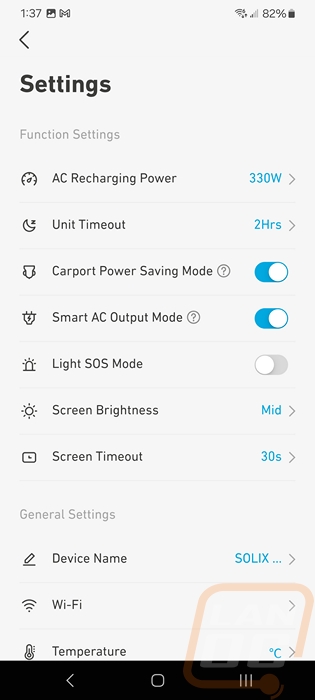
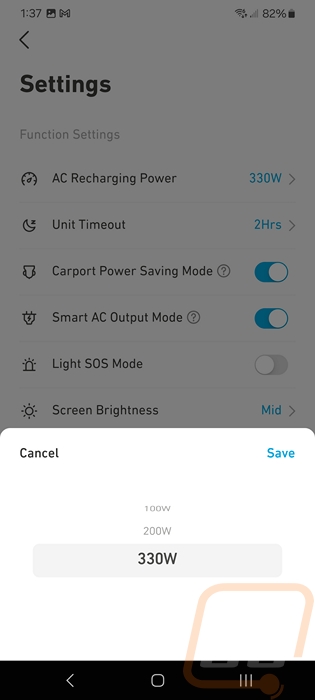
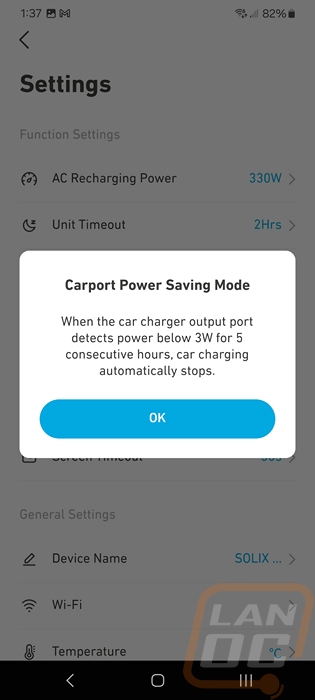
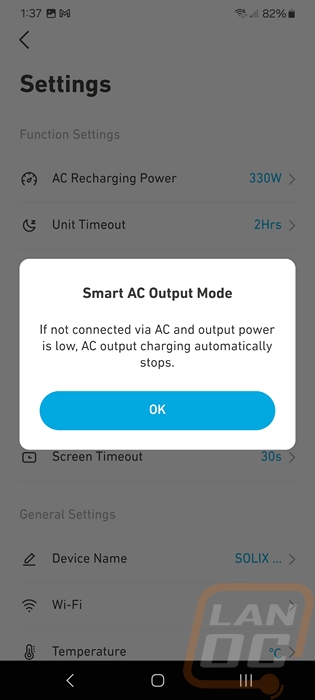
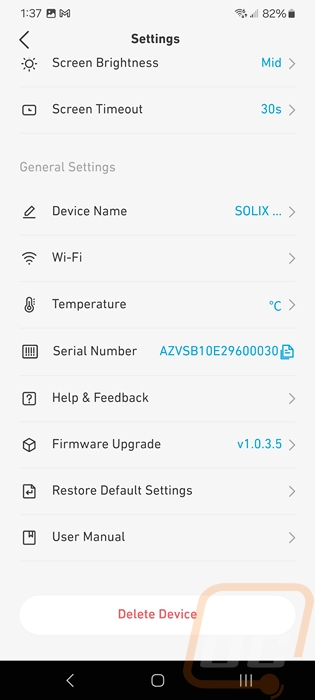
With that out of the way, how did the Solix C300 perform? Well as I mentioned previously I did have a problem with the original C300 that we had come in and I want to touch on those issues first. I had two problems with that first model that were most likely related. Running off of battery power was great for the first half of the battery, but past half way it dropped like a rock, using a percent every 30 seconds with it just keeping my keyboard charged and charging my phone. The other half of the issue was when charging, once it reached full charge the app notified me of warnings of output overload and it would shut things down. If I charged it with Type-C or unplugged it right away I didn’t have those issues. But with the replacement neither of those were issues. I’m not a big hiker or camper so I wasn’t using the C300 for those uses. I just like having more than enough battery power around the house so that when the power goes out we have things covered and the C300 did that. In fact, we had the power go out one night early in my testing and not only were we able to recharge our phones but with the light (as well as a lamp at my desk running off of my UPS) we played magic until the power came back on.
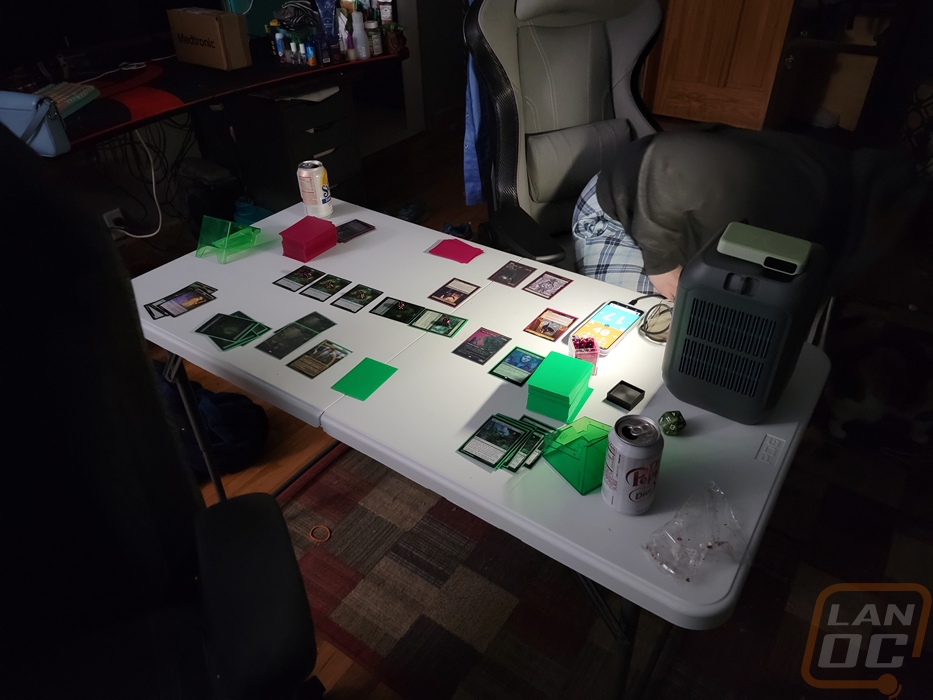
In the end, we hardly put a dent in the battery capacity, using around 1% of the battery life. Now imagine all of the other things you could be using that extra capacity with, especially with the AC outlets. You could power more lights, your modem and router, medical equipment, and more. The C300 can output 300 watts and surge up to 600 watts. Sadly that is just a hair under the surge power that you would most likely need to keep your full-sized fridge up and running. The overall power use on a lot of them is in the 150-180 watts range but when the compressor kicks on you will need the power to handle that surge. To give you an idea of what you could expect as far as battery life goes in those situations. I ran a PC off of the C300 and it was pulling 94 watts. At 81% battery life it projected 2.2 hours and I saw 2 hours and 13 minutes. Your modem and router might pull 20-40 watts total. You would see 8 hours of use at that rate or you could charge up your phones and keep the light on and still make it through the average power outage.

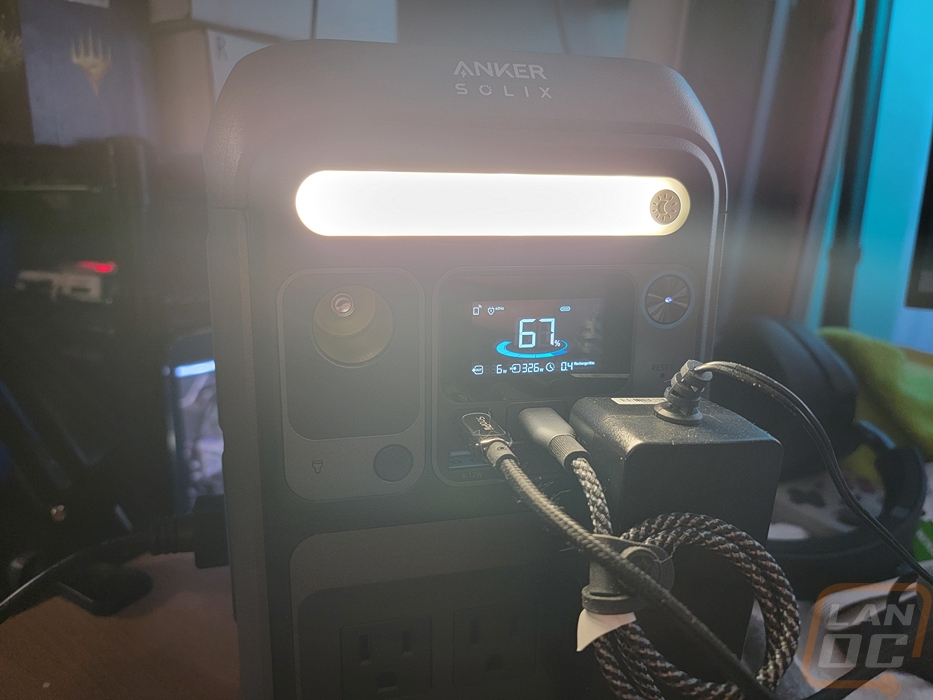
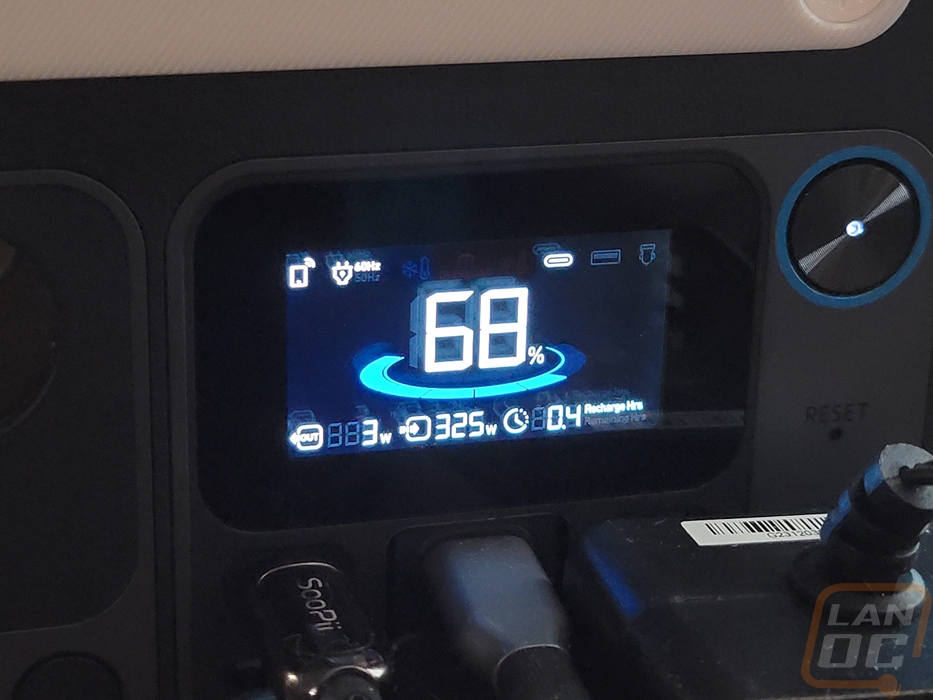
The other aspect that is interesting with the C300 is it also functions as a UPS. When plugged into AC power and with devices running on the AC plugs, if the power goes out everything continues to run, and when the power comes back on it will recharge and keep going. You need to adjust the settings in the app slightly to keep it from automatically turning off the power outlets, but it does work. So you could use this when camping or hiking but in between those trips it can be a safety net for something important. I mentioned it keeping your modem and router up but what about a medical device like a CPAP or a nebulizer?
Say you have used most of the charge up and have to recharge the C300, what are we looking at? Well, it depends on how you plan on recharging it. But if you are using the AC cord, you can set it to charge at up to 330 watts which I saw 325 watts in practice. You can charge it back up in 50 minutes which is crazy. Using the USB Type-C connection, assuming you have a charger and cord that can support it you can charge at 140 watts and that will take 1.8 hours. Then for Solar and using the Car Socket, you can charge it up in 2.5 hours with 100 watts of charging power. When running the AC charging at full speed things do warm up and I got our thermal camera out to check things out when I did that. Depending on the angle our hottest spot was 58.4c or 80.2c which is a significant difference. The app which has a sensor on the batteries was reading 42c so I’m inclined to believe that the lower of the two numbers on our thermal camera were true. When using that fast charging mode, there is a fan inside that kicks on. It isn’t silent but wasn’t too loud, if that is a concern turning the charging speed down takes care of it.
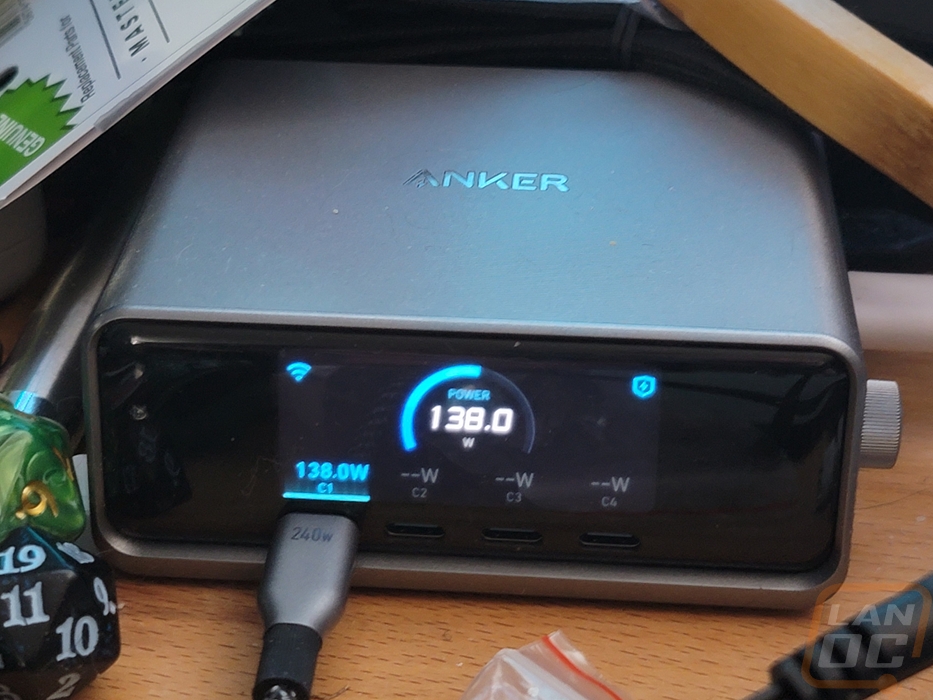
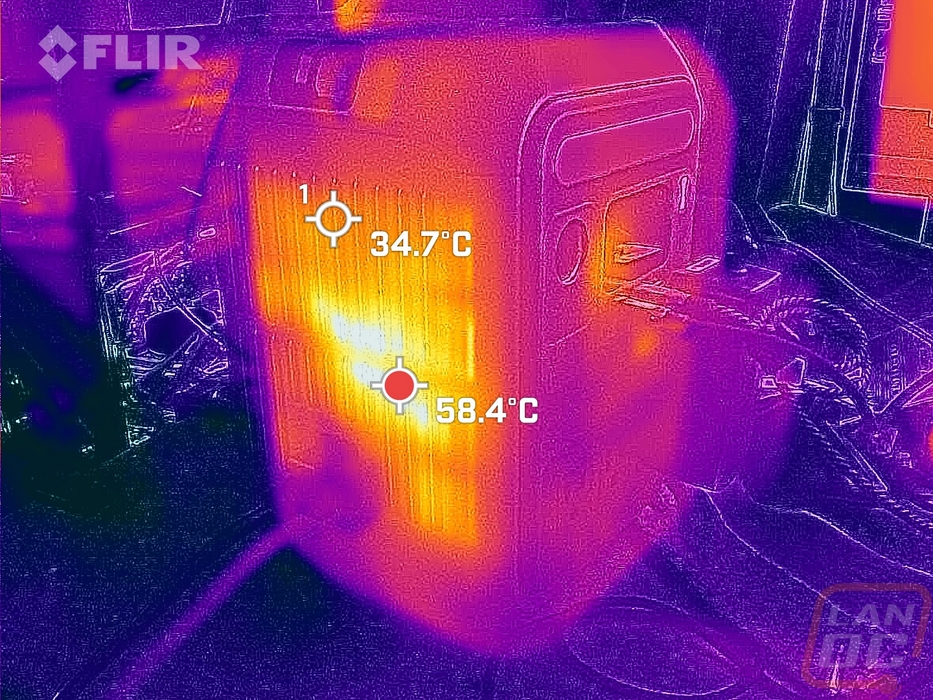
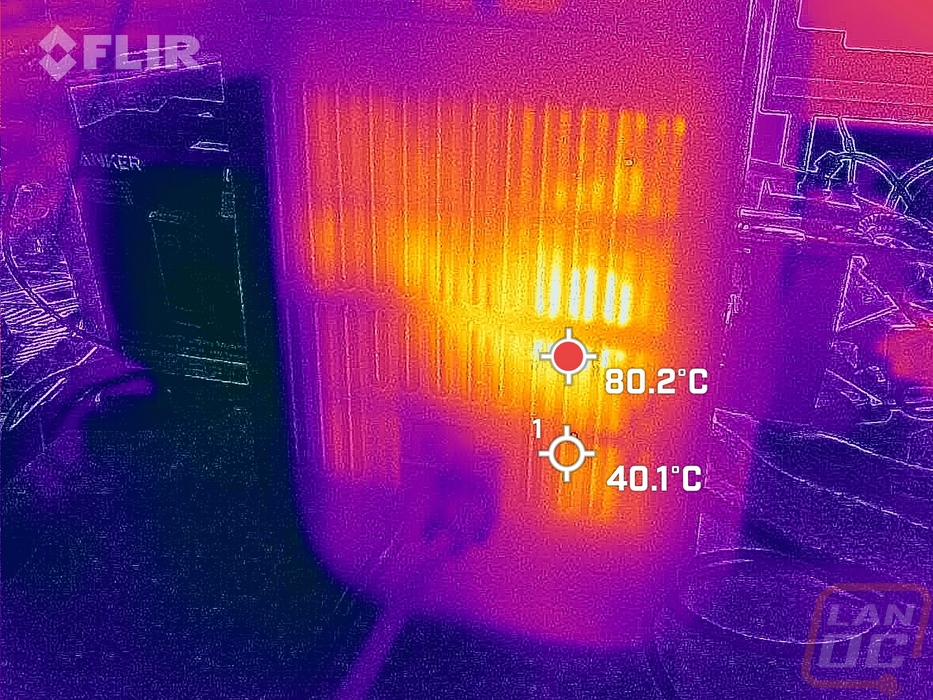
I was really impressed with the overall performance of the C300 but I did want to point out that the use case that Anker seems to be pushing in their marketing and on their website is that this is a camping or hiking device. That is going to depend a lot on your situation. This truly would be great for getting light and power when camping if you need a few extra amenities when doing it. But if you are hiking all day and bringing this along you better really need it because at over 9 pounds you are dragging a lot of extra weight on top of all of your other gear.
Overall and Final Verdict
I had high hopes when I had the Anker Solix C300 Portable Power Station coming in and for the most part, it met or exceeded those expectations. I did have trouble with our first C300, but even in that situation, I was impressed with its performance outside of the issues I had. But once I received the replacement and I was able to fully put it to use the C300 did great. The amount of flexibility that Anker built into it both on the charging and outputs is impressive. For charging you can recharge the C300 using an AC cord, using Type-C, a car's 12v accessory outlet, or with a solar panel. In even the slowest of those you can recharge the C300 in two and a half hours, but with the fastest (AC cord) you can do it in 50 minutes. When for outputs you have a car port, three Type-C plugs with two of those capable of 140 watts, a USB Type-A plug, or three AC outlets. If that wasn’t enough, you also have a built-in light as well. Anker is targeting hiking and camping, but I found it very useful around the house. It let us play magic when our power was out while also charging up our phones and we only used 1% of the total capacity in that multi-hour outage. With the AC outlets, you can do all of that and also keep important devices powered up as well. That same functionality also allows it to function as a UPS with it taking less than 10ms for it to switch from AC power to the battery. You could keep your medical equipment up and running, or if you are a tech head like me you could keep your router and modem up and running for 8 hours. You have 300 watts of power output on battery, which offers a lot of flexibility.
Beyond the issues with our first C300 that the replacement fixed, I had two other issues with it. First, Anker included the carry strap hooks on it and they make and sell a shoulder strap but they are selling it for $30, that’s just crazy. But my main issue with the C300 is the weight, it's just over 9 pounds. Now let me first say that I don’t think that weight is out of line for a large battery like this, nor was it an issue in ANY of my testing when using it around the house and office. My only issue is with it being promoted with hiking and I just can’t imagine anyone packing it and the devices you would want to power on any serious hiking or backpacking trip. That said, that isn’t to say this isn’t perfect for camping or to be more specific, glamping. If you aren’t carrying this all day long, this is a perfect way to get power and light for the campsite if you are looking to enjoy the outside but don’t want to give up your love for powered devices.
With all of that said, even without hiking being figured in. I do love this for someone who might use it here and there when camping but also uses it for power outages around the house either as a UPS or just to power and charge a few devices to weather a storm or outage. Now for pricing, the C300 has an MSRP of $249.99 but even at launch, it had a $50 coupon available. Right now with Black Friday deals hitting, it is currently $179.99. That’s good because at $250 it starts to get in the range of a cheap gas generator. That's not something you would want running at the campsite, but it does become competition for users like me who are looking to use it around the house. Altogether I’ve been extremely happy with the C300, but it does beg the question. When will we see a proper UPS line from Anker, they are already basically doing it here.


Live Pricing: HERE

